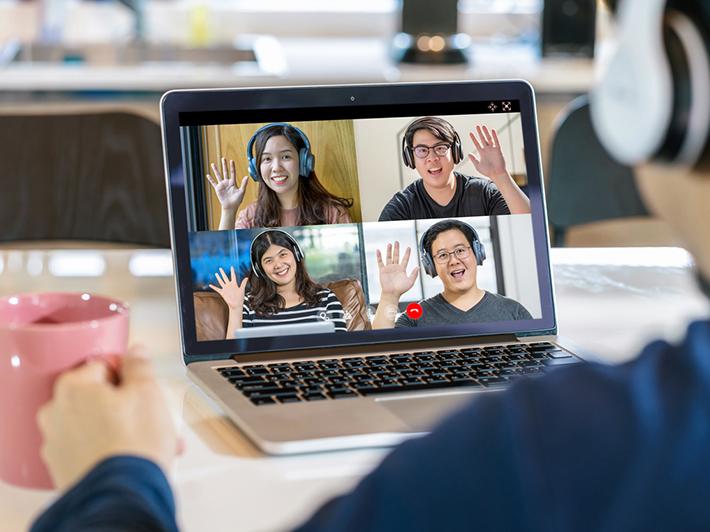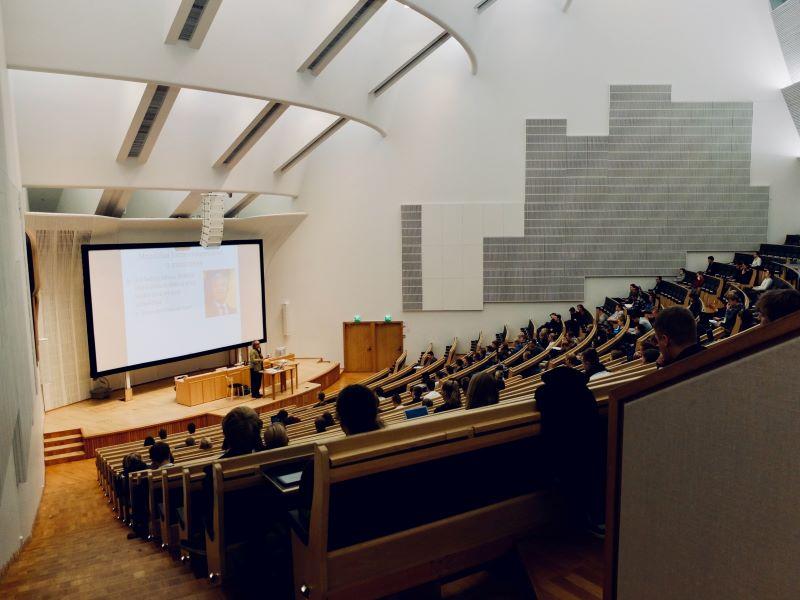
Beyond borders: how to make online global collaborative learning work
When students from archaeology courses at German and Australian universities collaborate on a project to build a virtual museum, this is online global collaborative learning (OGCL). In this model, geographically dispersed students learn with and from each other, use digital and online technologies, and follow a co-designed curriculum in a flexible learning environment that is predominantly asynchronous. Also referred to as collaborative online international learning (COIL), this approach aligns with internationalisation at home (IaH) objectives.
OGCL offers increased global competence and digital literacy, global networking and enhanced employability, as well as co-creation of knowledge and reflective practice. Despite this, it is not typically embedded into formal curricula in higher education. Barriers to its implementation include educators’ lack of time, minimal understanding of learning design for cross-institution collaboration, educational technology challenges and time-zone issues.
- Resource collection: The business of online education
- THE podcast: cross-cultural communication in the international classroom
- Unearthing the hidden curriculum in international classrooms
Key concepts and practices of OGCL draw from pedagogical practices including connected learning, also known as connectivism; online collaborative learning or collaborativism; and communities of practice (CoP). Key affordances of OGCL are increased global mindset and development of cultural intelligence. In addition, curriculum design that is “glocalised” implies a “think global and act local” mantra where differences are accepted and potentially applied to a local context without homogenisation. For example, collaboration around climate change can lead to solutions with bespoke applications in each participating country.
Focus on asynchronous online learning
One of the barriers to wider adoption of OGCL is lack of understanding of asynchronous online learning. Our learning management systems (such as Moodle) are geared towards “just in time” asynchronous learning, even as they allow for content sharing, interactions and assessment submission. Although edtech tools have evolved to offer interactive learning beyond the synchronous, unless these opportunities are well designed and relevant to the learning, or part of assessment, they may not be widely used by teachers or students.
Even post-Covid, tutorials tend to be synchronous, either on campus, online or hybrid. But where multiple time zones are in play, to leverage the features of OGCL, interactions must be mostly asynchronous and this requires clear communication protocols to ensure successful collaboration.
Learning design for online global collaborative learning
Curriculum-embedded, cross-institutional collaboration must align with curriculum to some extent, at least, either within a discipline or in an interdisciplinary context.
What are the attributes of a designed OGCL project?
- Length: collaborative projects can be anything from three weeks to three months long – with a preference for about five to six weeks
- Groups: cross-institution student groups with two to five participants in each
- Synchronous session (opening the collaboration): an online meeting for participants usually in the first week of the project
- Asynchronous collaboration: student groups communicate independently after the opening session. They are encouraged to use a combination of provided and chosen technology tools. Synchronous group meetings are optional
- Co-creation: after a collaborative investigation, where students share cultural perspectives, biases and understandings around the chosen topic, they co-create an artefact such as a website, video, podcast, poster, debate or even an immersive experience (such as a virtual museum)
- Synchronous showcase (closing the collaboration): the final group “product” is showcased in a synchronous session at the end of the collaboration
- Assessment: successful OGCL is typically linked with assessment.
How do you make this happen for your institution?
It can be hard work proposing, encouraging and designing OGCL within higher education.
These suggestions will make a positive difference to staff and student success:
- Support institutional adoption: Ideally, someone in your institution has the role of leading OGCL and coordinating partnerships, encouraging collaborative learning design and ensuring implementation is scaffolded.
- Build communities of practice: Internally a CoP provides a means for sharing the experience of OGCL among stakeholders. Externally, courses are available where you can learn more about the pedagogy. As the person leading this at the University of Southern Queensland, I encourage staff participation through a “What’s in it for me?” discussion around pedagogical leadership in online learning skills, globalisation of curriculum, research partnerships and future promotion – apart from the “feel good” aspect (which is totally true).
- Foster partners and plan together: Finding and maintaining viable and like-minded partners for OGCL is a key to success. You and your academic partner(s) will collaboratively design every aspect: inputs, process, outputs, technologies, guidelines for students (including communication and collaboration protocols). Be prepared for things to not go as smoothly as you want the first time
- Monitor, support and encourage student groups: Often students have not been asked to collaborate across borders before and will not understand the requirement unless it is made very clear, step-by-step. Provide student autonomy and encourage agile learning within groups.
I am leading an international research project, “Exploring curriculum-based online global collaboration in higher education”. By reviewing current practices, the goals of this research include determining educator preparation requirements and levels, defining attributes of learning design around co-creation of a shared product, and clarifying essential benefits for all stakeholders. Post-Covid interest has been renewed in not only making this learning experience possible within our institution but creating a bespoke programme as a point of difference in a competitive higher education market.
In summary, adopting OGCL can help prepare future-ready graduates who are interculturally aware and globally competent and who are comfortable connecting beyond borders using technologies to co-create knowledge.
The challenge of how we infuse online global collaboration into higher education, in meaningful ways, as practice and not in tokenistic ways, requires:
- design for cross-discipline and cross-institution learning
- alignment with assessment requirements
- agreement around essential technologies for connection and collaboration, while also giving students choices and freedom to find alternative methods
- upskilling academics in HyFlex learning focusing on asynchronous delivery
- providing support for finding partners and project implementation.
We are negligent if we do not provide this opportunity to our students in higher education at least once a year as part of their programme or degree.
Julie Lindsay is the senior education technology adviser at the University of Southern Queensland.
If you would like advice and insight from academics and university staff delivered direct to your inbox each week, sign up for the Campus newsletter.




